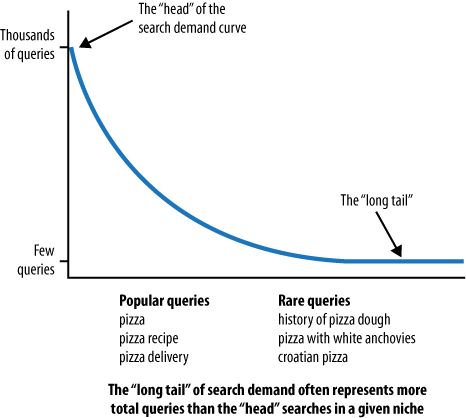8. Keyword Targeting in CMSs and Automatically Generated
Content
Large-scale publishing systems, or those that produce
automatically generated content, present some unique challenges. If
hundreds of pages are being created every day, it is not feasible to do
independent keyword research on each and every page, making page
optimization an interesting challenge.
In these scenarios, the focus turns to methods/recipes for
generating unique titles, <h1>
headings, and page content for each page. It is critical to educate the
writers on ways to implement titles and headings that capture unique,
key aspects of the articles’ content. More advanced teams can go further
with this and train their writing staff on the use of keyword research
tools to further optimize this process.
In the case of automatically generated material (such as that
produced from algorithms that mine data from larger textual bodies), the
key is to automate means for extracting a short (fewer than 70
characters) description of the article and making it unique from other
titles generated elsewhere on the site and on the Web at large.
9. SEO Copywriting: Encouraging Effective Keyword Targeting by
Content Creators
Very frequently, someone other than an SEO professional is
responsible for content creation. Content creators often do not have an
innate knowledge as to why keyword targeting is important—and therefore,
training for effective keyword targeting is a critical activity. This is
particularly important when dealing with large websites and large teams
of writers.
Here are the main components of SEO copywriting that your writers
must understand:
Search engines look to match up a user’s search queries with
the keyword phrases on your web pages. If the search phrases do not
appear on the page, chances are good that your page will never
achieve significant ranking for that search phrase.
The search phrases users may choose to use when looking for
something are infinite in variety, but certain phrases will be used
much more frequently than others.
Using the more popular phrases you wish to target on a web
page in the content for that page is essential to SEO success for
that page.
The title tag is the most important element on the page. Next
up is the first header (H1), and then the main body of the
content.
Tools exist that allow you to research and
determine what the most interesting phrases are.
If you can get these five points across, you are well on your way
to empowering your content creators to perform solid SEO. The next key
element is training them on how to pick the right keywords to
use.
The most important factor to reiterate to the content creator is
that content quality and user experience still come first. Then, by
intelligently making sure the right keyphrases are properly used
throughout the content, they can help bring search engine traffic to
your site. Reverse these priorities and you can end up with keyword
stuffing or other spam issues.
10. Long Tail Keyword Targeting
The
small-volume search terms, when tallied up, represent 70% of all search
traffic, and the more obvious, high-volume terms represent only 30% of
the overall search traffic.
For example, if you run a site targeting searches for
new york pizza and new york
pizza
delivery, you might be surprised
to find that hundreds of single searches each day for terms such as
pizza delivery on the corner of 57th & 7th, or
Manhattan’s tastiest Italian-style sausage pizza,
when taken together, will actually provide considerably more traffic
than the popular phrases you’ve researched. This concept is called the
long tail of search.
Targeting the long tail is another aspect of SEO that combines art
and science. In Figure 4, you may not want to
implement entire web pages for a history of pizza dough, pizza with
white anchovies, or Croatian pizza.

Finding scalable ways to chase long tail keywords is a complex
topic. Perhaps you have a page for ordering pizza in New York City, and
you have a good title and H1 header on the page (e.g., “New York City
Pizza: Order Here”), as well as a phone number and a form for ordering
the pizza, and no other content. If that is all you have, that page is
not competing effectively for rankings on long tail search terms. To fix
this, you need to write additional content for the page. Ideally, this
would be content that talks about the types of pizza that are popular in
New York City, the ingredients used, and other things that might draw in
long tail search traffic.
If you have a page for San Jose pizza, the picture gets even more
complicated. You don’t really want your content on the San Jose page to
be the same as it is on the New York City page.
To maximize your success, find a way to generate different content
for those two pages, ideally tuned to the specific needs of the audience
that arrives at those pages. Perhaps the pizza preferences of the San
Jose crowd are different from those in New York City. Of course, the
geographic information is inherently different between the two
locations, so driving directions from key locations might be a good
thing to include on the page.
If you have pizza parlors in 100 cities, this can get very complex
indeed. The key here is to remain true to the diverse needs of your
users, yet use your knowledge of the needs of search engines and
searcher behavior to obtain that long tail traffic.